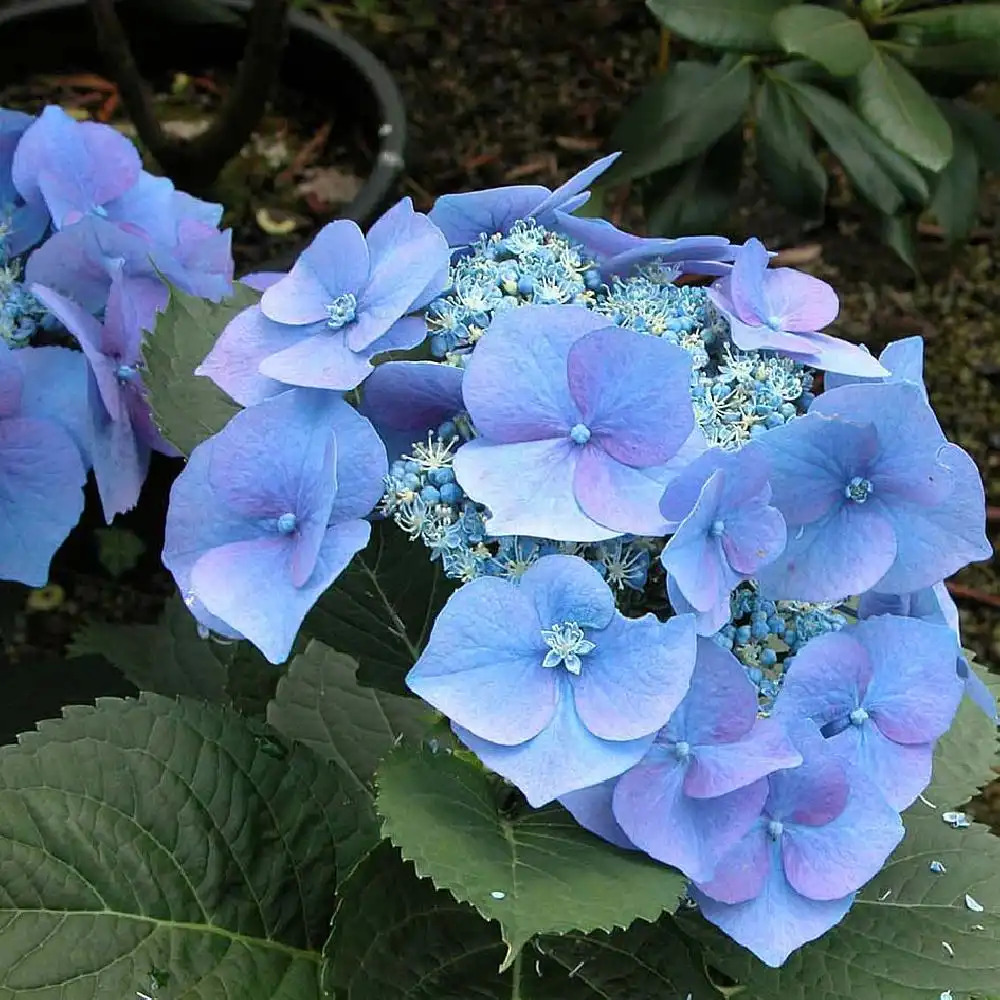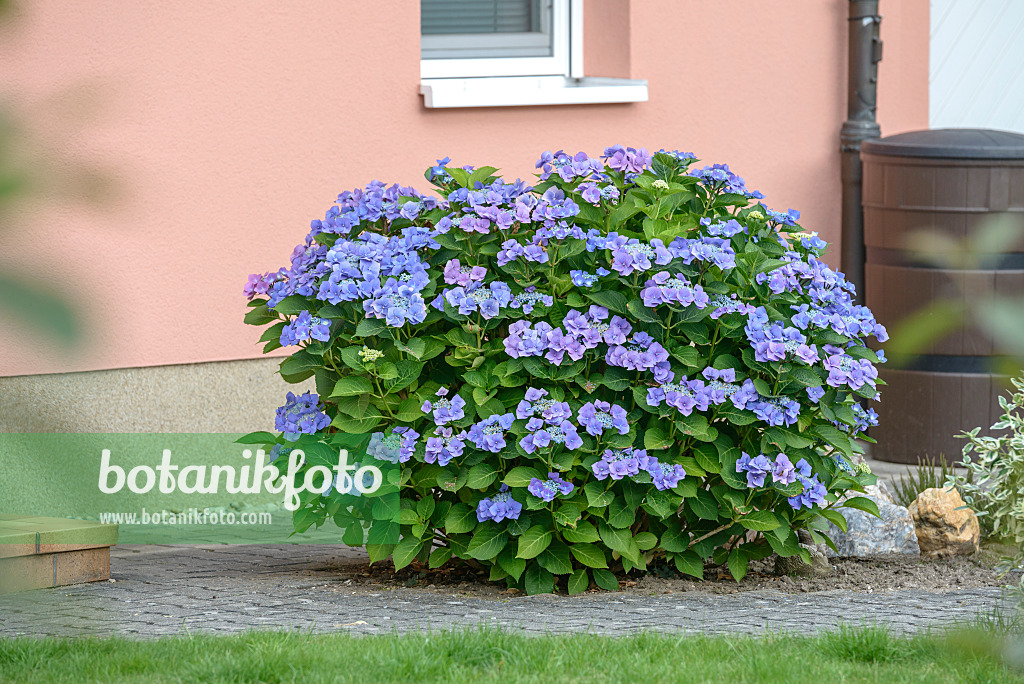How To Grow Hydrangea Macrophylla Blaumeise For Stunning Blue Blooms
Hydrangea macrophylla 'Blaumeise' is a beautiful deciduous shrub that is known for its stunning blue blooms. The flowers are large and lacecap-shaped, with a central cluster of smaller florets surrounded by larger, sterile florets. The color of the flowers can vary depending on the acidity of the soil, with blue flowers typically occurring in acidic soils and pink flowers occurring in alkaline soils.
Blaumeise hydrangeas are relatively easy to grow and care for, but there are a few things you can do to ensure that they thrive. In this blog post, we will discuss the best practices for growing Hydrangea macrophylla 'Blaumeise', including soil type, light exposure, watering, and fertilizer. We will also provide some tips on how to keep your Blaumeise hydrangeas blue.
Soil Type
Blaumeise hydrangeas prefer acidic soil with a pH of between 5.5 and 6.5. If your soil is alkaline, you can add sulfur or aluminum sulfate to lower the pH. You can test the pH of your soil using a pH testing kit.
Light Exposure
Blaumeise hydrangeas prefer partial shade. Too much sun can cause the leaves to scorch and the flowers to fade. If you live in a hot climate, you may need to provide your Blaumeise hydrangeas with afternoon shade.
Watering
Blaumeise hydrangeas need regular watering, especially during the hot summer months. The soil should be kept moist but not soggy. If your soil is sandy or well-draining, you may need to water your Blaumeise hydrangeas more often.
Fertilizer
Blaumeise hydrangeas benefit from a balanced fertilizer that is high in nitrogen. You can fertilize your Blaumeise hydrangeas once a month during the growing season. In the fall, you can apply a fertilizer that is high in phosphorus to help the plant prepare for winter.
Keeping Your Blaumeise Hydrangeas Blue
The color of Blaumeise hydrangeas can be affected by the acidity of the soil. In acidic soils, the flowers will be blue. In alkaline soils, the flowers will be pink. If you want to keep your Blaumeise hydrangeas blue, you can add aluminum sulfate to the soil. You can also add coffee grounds, pine needles, or oak leaves to the soil. These materials will help to lower the pH of the soil and keep your hydrangeas blue.
Pruning
Blaumeise hydrangeas do not need to be pruned heavily. You can prune them in the spring, after they have finished flowering. Simply remove any dead, diseased, or damaged branches. You can also trim the plant to shape it.
Overwintering
Blaumeise hydrangeas are hardy in USDA zones 5-9. In colder climates, you may need to protect your plant from the cold. You can do this by covering the plant with a burlap sack or by wrapping it with a layer of insulation.
Troubleshooting
If your Blaumeise hydrangeas are not blooming, it may be because they are not getting enough sunlight. They may also be suffering from a nutrient deficiency. If the leaves of your Blaumeise hydrangeas are turning yellow, it may be a sign of a nutrient deficiency. You can test the soil to determine which nutrients are lacking and then add a fertilizer that is high in those nutrients.
Conclusion
With proper care, Blaumeise hydrangeas can be a beautiful addition to your garden. They are relatively easy to grow and care for, and they can provide you with stunning blue blooms for many years to come.
If you're looking for a beautiful and easy-to-care-for hydrangea, the Hydrangea macrophylla Blaumeise is a great option. This variety is known for its large, deep blue flowers that bloom from early summer to late fall. The flowers are held in flat, plate-like clusters that can reach up to 20 centimeters in diameter. The leaves of the Blaumeise are also a beautiful deep green, making for a striking contrast with the flowers.
The Blaumeise is a relatively hardy plant that can tolerate a wide range of soil conditions. However, it does best in well-drained, slightly acidic soil. The plant prefers partial shade, but can tolerate full sun if the soil is kept moist.
If you're interested in learning more about the Hydrangea macrophylla Blaumeise, I recommend visiting . This website has a wealth of information about the plant, including its care requirements, planting tips, and more. You can also find photos of the plant in bloom, as well as customer reviews.
FAQ of hydrangea macrophylla blaumeise
- What is Hydrangea macrophylla Blaumeise?
Hydrangea macrophylla Blaumeise is a type of hydrangea that is known for its large, blue flowers. It is a relatively hardy plant that can tolerate a wide range of conditions, making it a good choice for many gardeners. Blaumeise hydrangeas typically bloom in late spring or early summer, and their flowers can last for several weeks.
- How do I care for Hydrangea macrophylla Blaumeise?
Blaumeise hydrangeas are relatively easy to care for. They prefer full sun to partial shade, and they need well-drained soil. Water them regularly, especially during hot, dry weather. You may also need to fertilize them once or twice a year.
- How do I propagate Hydrangea macrophylla Blaumeise?
Blaumeise hydrangeas can be propagated from cuttings. Take cuttings from healthy, new growth in early summer. The cuttings should be about 4 inches long and have at least two sets of leaves. Dip the bottom of the cuttings in rooting hormone and plant them in a pot of well-draining potting mix. Keep the potting mix moist and place the pot in a warm, sunny location. The cuttings should root in about six weeks.
- What are some common pests and diseases that affect Hydrangea macrophylla Blaumeise?
Blaumeise hydrangeas are susceptible to a few common pests and diseases, including aphids, scale, and powdery mildew. Aphids are small, sap-sucking insects that can cause leaves to wilt and curl. Scale insects are small, oval insects that attach themselves to leaves and stems. Powdery mildew is a fungal disease that can cause leaves to become covered in a white, powdery substance. If you notice any pests or diseases on your Blaumeise hydrangea, treat them immediately with an appropriate insecticide or fungicide.
- How do I overwinter Hydrangea macrophylla Blaumeise?
Blaumeise hydrangeas are hardy in USDA zones 5-9. In colder regions, you may need to protect your plant from the cold during the winter. You can do this by covering the plant with a burlap sack or other protective material. You may also need to bring the plant indoors if you live in an area with very cold winters.
Image of hydrangea macrophylla blaumeise
- Image 1: A large, lush hydrangea bush with blue flowers. The flowers are arranged in large clusters and are surrounded by dark green leaves.

- Image 2: A close-up of a single hydrangea flower from Image 1. The flower is a deep blue color and has a slightly wavy edge.

- Image 3: A hydrangea bush in full bloom. The flowers are a lighter blue color than in Image 1 and are arranged in a more open, airy manner.

- Image 4: A hydrangea bush planted in a garden. The bush is surrounded by other flowers and plants, including some tall trees.

- Image 5: A hydrangea bush in a pot on a patio. The bush is in full bloom and the flowers are a bright blue color.

Post a Comment for "How To Grow Hydrangea Macrophylla Blaumeise For Stunning Blue Blooms"